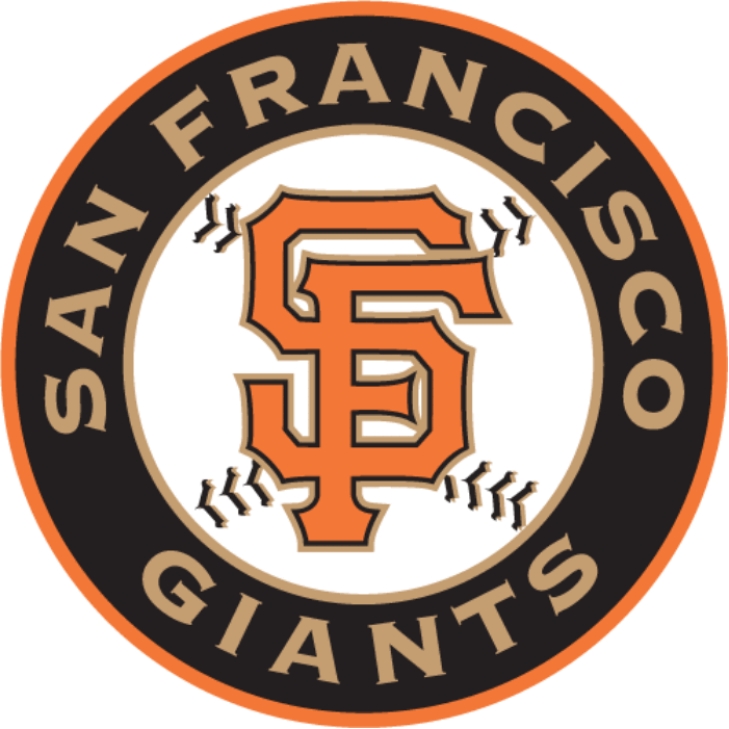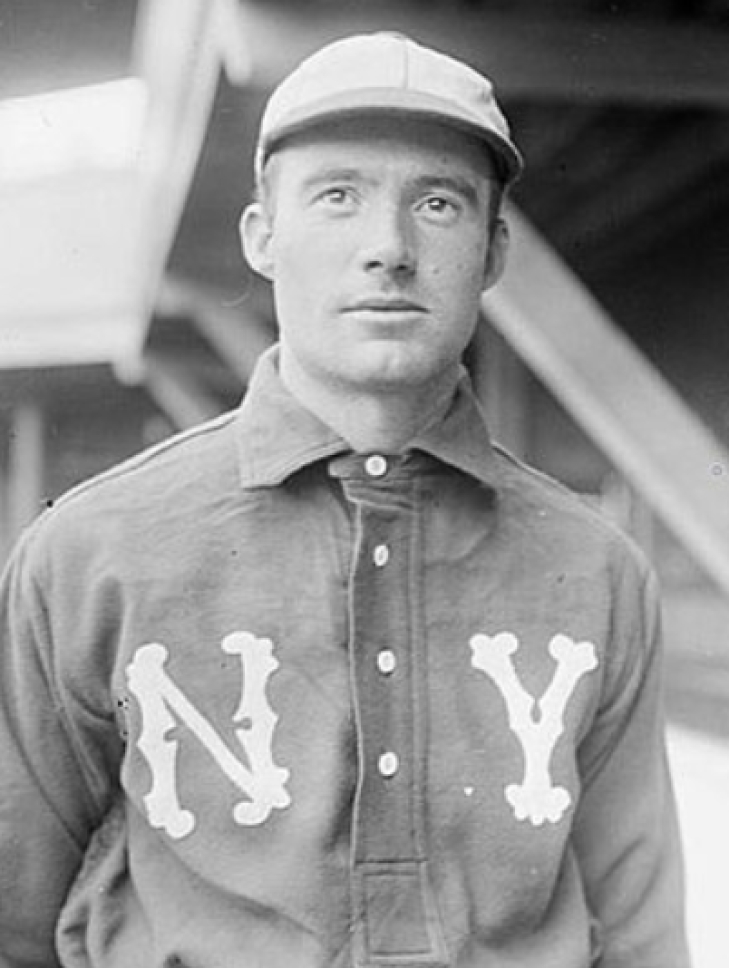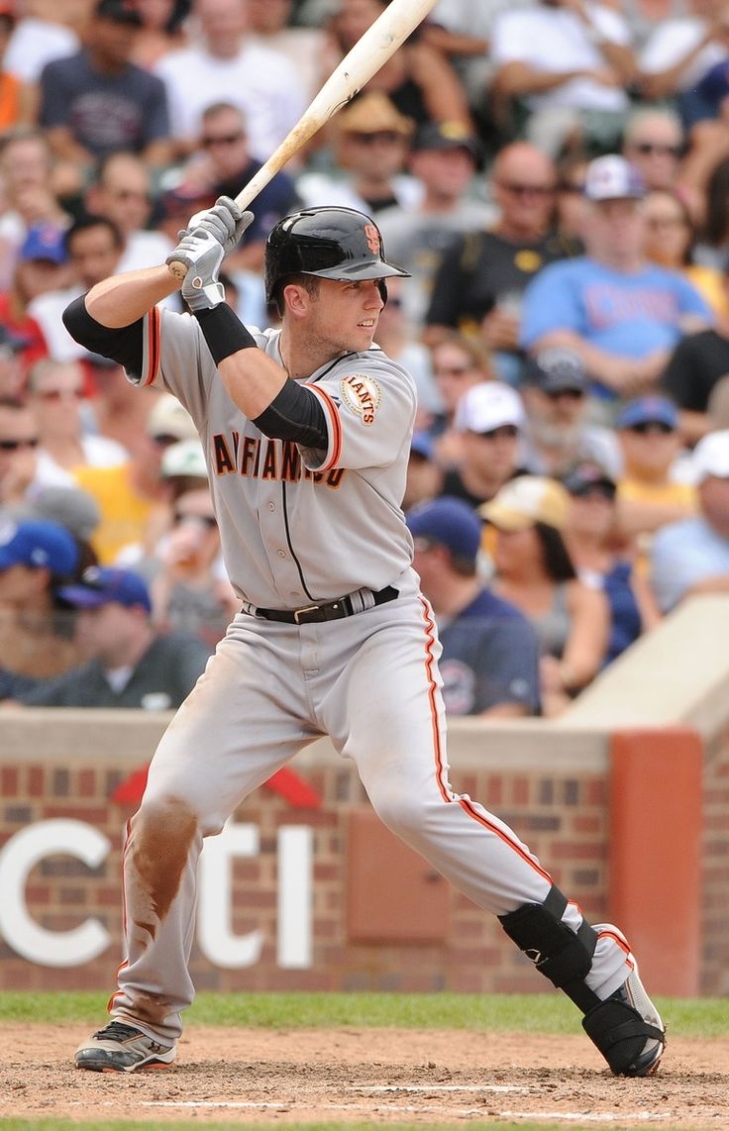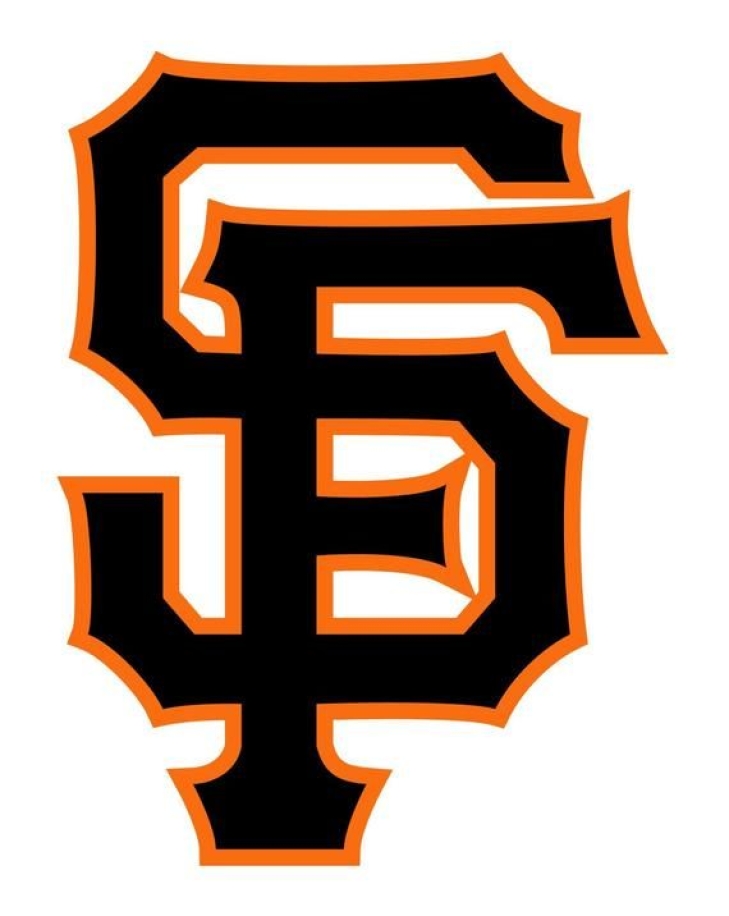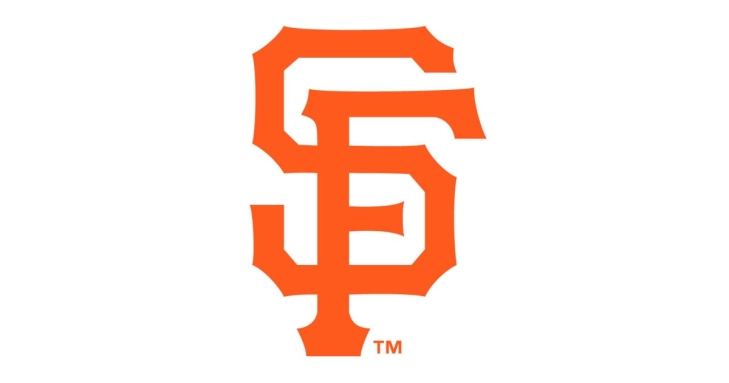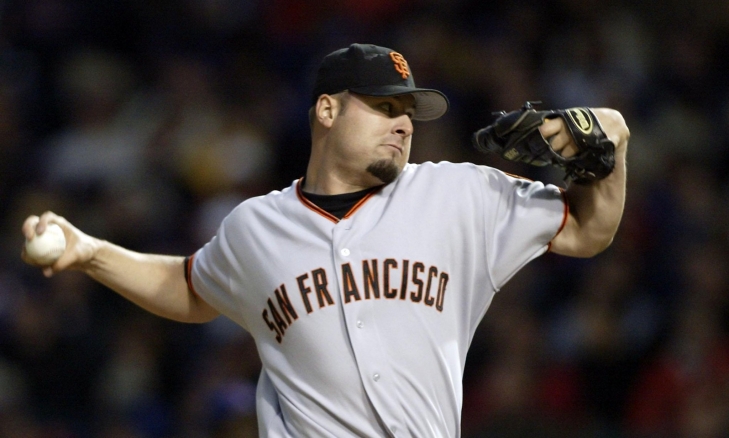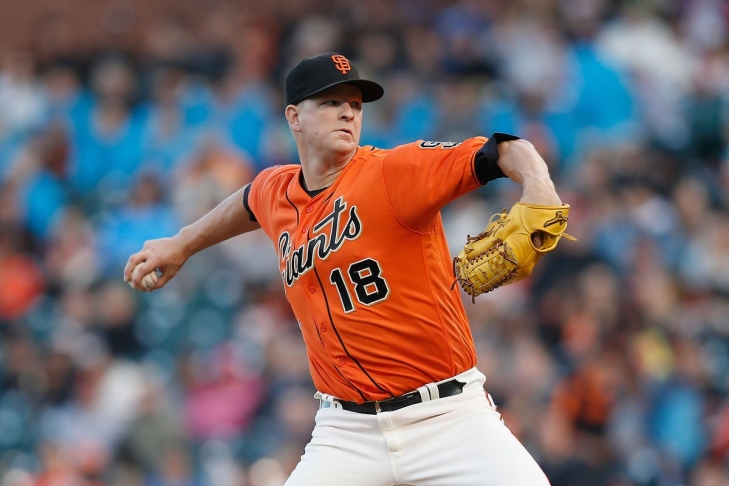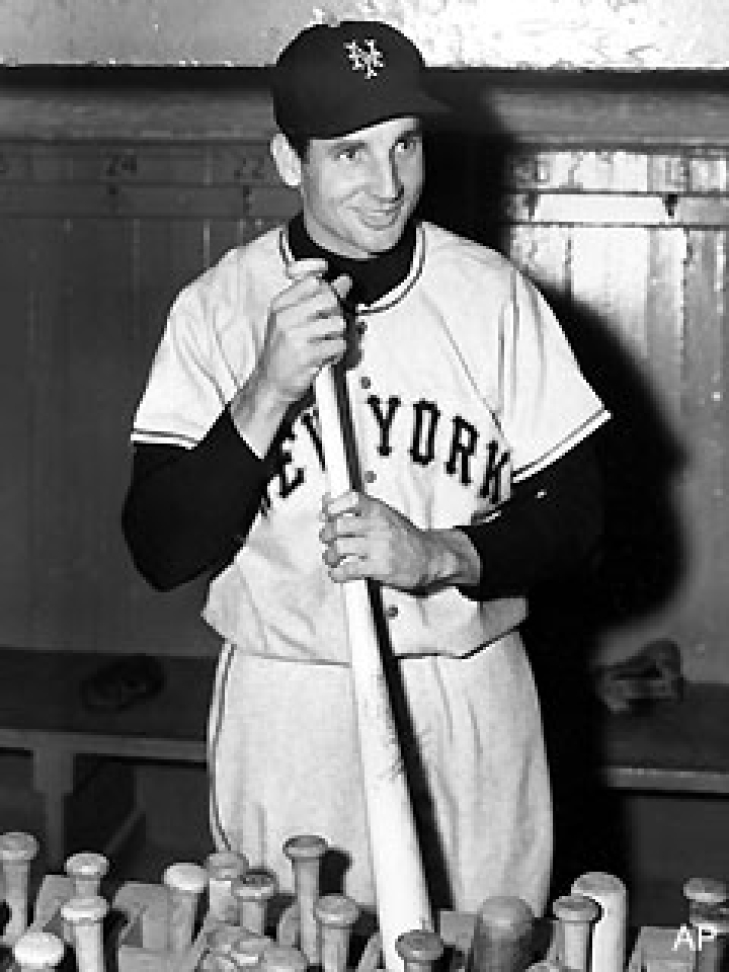Our All Time Top 50 San Francisco Giants have been revised to reflect the 2024 Season
Yes, we know that this is taking a while!
As many of you know, we at Notinhalloffame.com are slowly generating the top 50 of each major North American sports team. That being said, we have existing Top 50 lists and consistently look to update them when necessary and based on necessity. As such, we are delighted to present our post-2024 revision of our top 50 San Francisco Giants.
As for all of our top 50 players in baseball, we look at the following:
1. Advanced Statistics.
2. Traditional statistics and how they finished in the National League.
3. Playoff accomplishments.
4. Their overall impact on the team and other intangibles that are not reflected in a stat sheet.
Please note that our algorithm has changed, which yielded minor changes throughout the baseball lists.
Last year, the Giants went 80-82 and were fourth in the NL West. There were no new entrants, except for one who debuts based on the new algorithm,
As always, we present our top five, which saw one change based on the new algorithm.
1. Willie Mays
2. Barry Bonds
3. Mel Ott
4. Christy Mathewson
5. Carl Hubbell
You can find the entire list here.
The only new addition was George Van Haltren, who as discussed above, enters via the new system.
We thank you for your continued support of our lists on Notinhalloffame.com.
50. George Van Haltren
After the 1893 Season, George Van Haltren’s contract was sold to the New York Giants, and this is where he spent the next seasons, which by far eclipsed the first portion of his career.
A starting Outfielder for most of his time in New York, Van Haltren compiled at least 175 Hits in his first eight years with the Giants and batted over .300 in all of those seasons. A competent hitter, Van Haltren could also do damage on the bases and swiped 320 in New York.
As a Giant, Van Haltren amassed 1,580 Hits with a .321 Batting Average.
RIP: Orlando Cepeda
Orlando Cepeda, a teammate of Willie Mays who died a week ago, passed away. He was 86 years old.
Cepeda debuted in 1958 with the San Francisco Giants where he won the National League Rookie of the Year. He was named to the next six All-Star Games, and the slugger won the Home Run (46) and RBI (142) Titles. He was later traded to the St. Louis Cardinals, where he helped them win the World Series in 1967. Cepeda also played for Atlanta, Oakland, Boston and Kansas City and retired with 379 Home Runs, 1,365 RBIs and a .297 Batting Average.
Cepeda was inducted into the Baseball Hall of Fame in 1999.
We here at Notinhalloffame.com would like to extend our condolences to the fans, friends, and family of Orlando Cepeda.
RIP: Willie Mays
The word legend doesn’t cut it.
Willie Mays, one of the greatest baseball players who ever lived, died at the age of 93.
Willie Mays played two years with Birmingham of the Negro Leagues before he signed with the New York Giants, and it would not take long before the “Say Hey Kid” became the face of the franchise.
Mays could do it all. When they speak of five-tool baseball players, Mays is the literal definition. He had it all. Mays had the power, the speed, the glove, the arm, and the average. There was nothing that he could not do, and that wasn't the case just for a year or two; Mays had those skills for most of his career. Mays could very well be the most complete baseball player that ever lived.
Debuting for the Giants in 1951, Mays won the Rookie of the Year and was the spark plug for the team that shocked the world by coming from 13.5 Games behind in August to win the Pennant. New York didn’t win the World Series, but they had a star on the rise, but military service kept him out of 1953 and most of 1952. When he returned, he staked a claim as baseball’s top dog.
Mays won the Batting Title, 1954 MVP, and led New York to a World Series Championship. Although 1954 was his only World Series win, his individual greatness was cemented in every facet of the sport. He went to his first All-Star Game and would be invited every year until 1971.
Mays had the perfect eye at the plate. He batted over .300 nine times and drew Walks, netting an OBP over .400 five times and winning two OBP Titles. The Power game with Mays was also one of the best ever. Mays won four Home Run Titles, blasting 646 of 600 career Home Runs with the Giants. Mays never won an RBI Title but had at least 100 in a season ten times with 1,909 overall as a Giant. An MVP again in 1965, Mays had six more top-five MVP finishes.
Speed was another one of Mays's calling cards. He led the NL in Stolen Bases four years in a row (1956-59) with 336 as a Giant. Mays was also one of the game's top defensive players, having not only made the 1954 over-the-head catch in Game 1 of the World Series but continuing to dominate on the field. He led the NL in Defensive bWAR in 1954 and was in the top ten seven other times. He also was a three-time leader in Total Zone Runs.
Mays was traded to the New York Mets during the 1972 Season, where he unceremoniously ended his career, though he did help them win the 1973 Pennant. He is still the all-time Giants leader in bWAR (154.5), Offensive bWAR (134.8), Runs Scored (2,011), Hits (3,187), and Home Runs (646).
Mays was inducted into the Baseball Hall of Fame in 1979, his first year on the ballot. San Francisco retired his number 24 in 1972 while he was still an active player, and he was later an inaugural member of the Giants Wall of Fame in 2008. He was also chosen for our inaugural United States Athletics Hall of Fame.
We here at Notinhalloffame.com would like to extend our condolences to the fans, family, and friends of Willie Mays.
.
Sergio Romo
Sergio Romo played the first half of his career with the San Francisco Giants (2008-16), where the Relief Pitcher was an All-Star in 2013 and won three World Series Rings (2010, 2012 & 2014). Romo had 84 Saves for the Giants and 137 Overall in a career that also saw him throw for Los Angeles (NL), Tampa Bay, Miami, Minnesota, Oakland, Seattle and Toronto.
Pablo Sandoval
For a brief time, the baseball world fell in love with the "Kung Fu Panda" - and we don’t mean the one voiced by Jack Black. Pablo Sandoval, hailing from Venezuela, was a portly player but managed to move his weight around early in his career with the San Francisco Giants. He made his debut in 2008 and took over at Third Base, dazzling fans with his demeanor and unlikely acrobatics for a big man. 2009 was arguably his best season, where he set career marks in hits (189), home runs (25), RBIs (90), and the Slash Line (.330/.387/.556) and finished seventh in MVP voting.
Sandoval remained a good player over the next few years - he even went to the All-Star Game in 2011 and 2012 - but it was when the Giants won the World Series in 2010, 2012, and 2014 that he became nationally known. However, it wasn't all sunshine for him, as his extra weight became a problem and he was benched on occasions. Sandoval did not do much in his first World Series, but he blasted six home runs in the 2012 Fall Classic, including three in Game 1, and was named the World Series MVP, which was the highlight of his career.
The Boston Red Sox signed Sandoval as a Free Agent in 2015, but he wasn't the same player. Still overweight, Sandoval's hitting fell apart, and he was held to just six at-bats in 2016 due to shoulder issues. It was not much better for Sandoval in 2017, as he again struggled and was released. The Giants signed him back, and he was used in a bench role over the next few seasons. Sandoval even led the NL in pinch hits (18) in 2019 but was released again, this time during the 2020 season. The Braves picked him up to use in a reserve capacity, and he lasted until 2021. Though he was not on the playoff roster, he was awarded a World Series Championship Ring by the Atlanta.
As popular as he was at one time, Sandoval's overall numbers (1,279 hits, 153 home runs) are nowhere close to Hall of Fame worthy. However, those memories, oh boy, they sure were fun!
Buster Posey
Buster Posey was a San Francisco Giant for all of his 12 seasons in the Majors, and is widely considered as the best Catcher of the 2010s.
Posey was an outstanding player at the University of Florida, where he won the 2008 Dick Howser Trophy and the Golden Spikes Award. In the 2008 Amateur Draft, the Giants chose him as the fifth overall pick. After a brief seven-game stint with San Francisco, he became their everyday catcher and won the National League Rookie of the Year award. He led the Giants to a World Series Championship that year, which was his first of three.
Posey was selected as an All-Star for the first of seven times, and helped the Giants win another World Series, with his contribution being significant. Although he suffered a fractured fibula in 2011, he made a strong comeback the following year, and became the Comeback Player of the Year while posting career-high numbers in batting average (.336), home runs (24), and RBIs (104). He was named the MVP that year, and even better, would anchor San Francisco to another World Series Championship.
Posey remained one of the best catchers in the National League, and helped the Giants win yet another World Series in 2014 (his third). He continued to hit over .300, excel in defense, and handle his pitchers well. In total, he won two Wilson Defensive Awards, one Gold Glove, and five Silver Sluggers.
Posey opted out of the 2020 season due to COVID-19, but made a successful comeback in the following year, and won his second Comeback Player of the Year award. With the introduction of All-MLB awards, he earned All-MLB 2 honors. He then surprised many by announcing his retirement after the 2021 season, which he ended with an even 1,500 hits, a batting average of .302, and 158 home runs.
Posey's Hall of Fame case lies in his positional dominance, as the overall statistics might fall short. Anyone who was the position in a league for an extended period of time has a strong Hall of Fame case in our eyes
Our All-Time Top 50 San Francisco Giants have been revised (sort of) to reflect the 2023 Season
Yes, we know that this is taking a while!
As many of you know, we here at Notinhalloffame.com are slowly generating the top 50 of each major North American sports team. That being said, we have existing Top 50 lists out, and we always consistently look to update them when we can and based on necessity. As such, we are very happy to present our post-2023 revision of our top 50 San Francisco Giants.
As for all of our top 50 players in baseball, we look at the following:
1. Advanced Statistics.
2. Traditional statistics and how they finished in Major League Baseball.
3. Playoff accomplishments.
4. Their overall impact on the team and other intangibles that are not reflected in a stat sheet.
Last year, the Giants failed to make the playoffs, and as this team is over a century old, it takes a lot to break into this list. Nobody did in 2023, and there were no changes, but we always want to acknowledge that we took the last season into consideration.
As always, we present our top five, which (obviously) saw no changes:
1. Willie Mays
2. Barry Bonds
4. Mel Ott
5. Carl Hubbell
You can find the entire list here.
We thank you for your continued support of our lists on Notinhalloffame.com.
Our All-Time Top 50 San Francisco Giants are now up
Yes, we know that this is taking a while!
As many of you know, we here at Notinhalloffame.com are slowly generating the 50 of each major North American sports team. We have a new one to unveil today, that of the San Francisco Giants.
The franchise began in 1883 as the New York Gothams, changing their name to the Giants shortly after. In the pre-modern World Series era, New York won the 1888 and 1889 Pennants, and in 1905, they captured their first World Series. The Giants won the World Series again in 1921, 1922, 1933, and 1954, but like the Brooklyn Dodgers, the Giants were not going to be the top dog in NYC, and they moved to San Francisco in 1956.
Even though they had Willie Mays in tow, it would take long after he left until the turn of the century for the Giants to win another title. San Francisco won the 2010, 2012 & 2014 World Series, giving them eight in total.
This list is up to the end of the 2022 regular season.
Our Top 50 lists in Baseball look at the following:
1. Advanced Statistics.
2. Traditional statistics and how they finished in the National League.
3. Playoff accomplishments.
4. Their overall impact on the team and other intangibles not reflected in a stat sheet.
Remember, this is ONLY based on what a player does on that particular team and not what he accomplished elsewhere and also note that we have placed an increased importance on the first two categories.
This list is updated up until the end of the 2022 Season.
The complete list can be found here, but as always, we announce our top five in this article. They are:
1. Willie Mays
2. Barry Bonds
4. Mel Ott
5. Carl Hubbell
We will continue our adjustments on our existing lists and will continue developing our new lists.
Look for our more material coming soon!
As always, we thank you for your support.
46. Freddie Fitzsimmons
Freddie Fitzsimmons played the first dozen years of his career with the New York Giants after being acquired from Indianapolis of the American Association in the summer of 1925, and the year after, he was a fixture in the Giants rotation until he was traded to crosstown Brooklyn during the 1937 Season.
The righthander would not have a losing record in New York until 1935, which included a 20-Win year in 1928, 19 Wins in 1930, and 18 in both 1931 and 1934. Fitzsimmons cranked out well over 200 Innings nine years in a row (1926-34), and though he did not dazzle with Strikeouts, he found a way to get outs and was in the top ten in WHIP four times as a Giant.
Fitzsimmons would help the Giants win the 1934 and 1936 Pennant, and though he lost all three decisions, he was one of the reasons they got there, and New York would prevail in 1933. His overall record with New York of 170 and 114, a winning percentage of .599.
49. George Kelly
George Kelly is a forgotten power hitter in the early days of the long game, and considering who was exploding around him, his ghosting is not surprising.
Playing mainly at First Base, Kelly was with New York in his first two years in the Majors (1915-16) before the Pittsburgh Pirates chose him off waivers. It was a brief stay in Western Pennsylvania, as the Giants claimed him back off waivers less than a month later.
The bouncing around ended for Kelly, who secured a regular role for the Giants in 1920 and excelled as the league leader in RBIs (94). The First Baseman led the NL in Home Runs the year after (23) and began a four-year streak of at least 100 Runs Batted In.
With crosstown rival Babe Ruth of the Yankees shattering the records for going deep, Kelly was not in that depth but did lead the Giants to World Series Titles in 1921 and 1922. He would later win the NL RBI Title in 1924 (136), where he had another 20-plus HR year, which he replicated the year after.
Kelly was traded to Cincinnati in 1927, leaving behind 123 Home Runs and 762 RBIs.
In 1973, Kelly was a Veterans Committee Selection for the Hall of Fame.
47. Brandon Belt
Brandon Belt played the first twelve years if his Major League career with the San Francisco Giants, where he predominantly played at First Base.
An All-Star in 2016 (his best year, with 17 HR, 82 RBI, and .868 OPS), Belt was never considered an elite performer but played a role in the Giants World Series wins in 2012 and 2014. Belt might not be considered a power hitter, but this is a respectable metric for him, as he had seven years with at least 15 Home Runs, including a surprising 29 HR year in 2021, where he only played 97 Games. He signed with the Toronto Blue Jays in 2023, leaving behind 1,146 Hits and 175 Home Runs.
Belt will never go down as one of the best players in a Giants uniform, but only a handful have played with the team as long and have multiple rings to show for it.
40. Hooks Wiltse
George Wiltse earned the name "Hooks" for the way he could work a curveball, a specialty he showed off as a New York Giant for a decade.
Joining the Giants in 1904, Wiltse helped New York win four Pennants, with him helping to win the World Series in 1905. Wiltse was a back-to-back 20-Game winner in 1908 and 1909, and he never had a year where his ERA was under 2.50 until 2010, his seventh season in the Majors. An above-average Pitcher, Wiltse was also a good hitter, batting .215 with 155 Hits in New York.
Wiltse was released after the 1914 Season and would never play in the Majors again. He had a solid run as a Giant with a record of 136-85 and a 2.48 ERA.
44. Roger Bresnahan
Originally a Pitcher, Roger Bresnahan morphed into a Catcher and Outfielder in 1901 for the Baltimore Orioles. As the Orioles imploded during the 1902 Season, Bresnahan was released and was one of many who followed Manager John McGraw to the New York Giants, and it was in the Big Apple where he proved his skills.
Bresnahan had his best year in 1903, helping New York win the Pennant, putting forth career bests in Hits (142), Stolen Bases (34), and the Slash Line (.350/.443/.492). The Giants elected not to participate in the World Series but did in 1905 when Breshanen had his second .300 year. Breshanen did not bat over .300 again as a Giant, but he walked often, had an OBP of .403 in New York, and also led the NL in Walks in 1908.
He was traded to St. Louis after the 1908 Season, leaving behind 731 Hits, solid defense, and an excellent OBP.
Breshanen received the Hall of Fame call in 1945 via the Old Timer’s Committee.
38. Jack Clark
Jack Clark made a lot of progress in quick fashion, first tasting Major League action in 1975, two years after he was taken deep in the 13th Round. Two years later, he was a starter in Rightfield for the Giants, but it was not until the year after that he broke out.
Clark's 1977 was a 25 Home Run year with a .306 Batting Average. Jack "The Ripper" went to his first All-Star Game and was fifth in MVP voting. An All-Star again the following year, he belted over 20 Home Runs (26) and would break that mark the third year in a row in 1980 (22). Clark likely would have had an entire six-year run of 20 Home Runs had the 1981 strike not held him to 17. Mostly known for his power, Clark had his moments defensively, with a strong throwing arm, though his range was, at times, suspect.
Following a disappointing injury-plagued 1984 and conflicts with Frank Robinson, the Giants Manager, Clark was traded to St. Louis for four players. With San Francisco, Clark smacked 163 Home Runs and 1,034 Hits.
In 2008, Clark was among many selected for the inaugural Wall of Fame Class.
37. Art Devlin
Art Devlin was an excellent defensive Third Baseman in the dead-ball era, finishing four times in the top ten in Defensive bWAR, and three times was the leader in Assists by a Third Baseman.
Devlin was not the best hitter in the National League, but he was competent, collecting at least 120 Hits in his first seven seasons and using his speed to swipe at least 20 Bases in six of those years, including a league-leading 59 in 1905. That was the year that he helped New York win the World Series.
A Giant for eight years before he was sold to the Boston Braves, Devlin had 1,011 Hits and 439 Stolen Bases for New York.
43. Jason Schmidt
Before Jason Schmidt arrived as he arrived in San Francisco as part of a trading deadline day trade with Pittsburgh in 2001, there were no reasons to believe that he would emerge as the ace of the staff. The starter, who began his career in 1995 with Atlanta, had never finished a season with an ERA under four or finished with more than 13 Wins, but the Giants uniform brought out the best of Schmidt.
Schmidt finished the season 7-1, and he resigned with the Giants. After a decent 2002 (13-8, 3.45 ERA), Schmidt had the season of his life, going 17-5 and leading the National League in ERA (2.34), ERA+ (180), and WHIP (0.953). An All-Star for the first time, Schmidt finished second in Cy Young voting to Houston’s Roger Clemens. Schmidt returned to the All-Star Game the year after, on the back of an 18-7/3.20 ERA year, where he was fourth in Cy Young voting but was named by The Sporting News as their Pitcher of the Year.
Schmidt's output declined after those two years, but he was still good enough in the first half of 2016 to make the All-Star team. He left the Giants as a Free Agent for Los Angeles, but shoulder issues held him to only 10 MLB Games over the next three years, leading to his eventual retirement.
With San Francisco, Schmidt went 78-37 with a 3.36 ERA and 1,065 Strikeouts, and the team enshrined him on their Wall of Honor in 2011.
39. Matt Cain
Matt Cain was a Giant throughout his 13 years of Major League service (2005-17), and despite his losing record (104-118, he was a vital leader of a squad that won three World Series wins in the 2010s.
Cain made it to the Majors in 2005, three years after he was a First Round Pick, and he was immediately plugged into the starting rotation. The fifth-place finisher for the National League Rookie of the Year in 2006 (13-12, 4.15 ERA), Cain had better ERAs in 2007 and 2008, but San Francisco was not yet a contender, and he went 15-30 in those two seasons, but as the Giants got better, so did Cain.
The right-hander was an All-Star in 2009, posting his first sub-three ERA (2.89), and had a 14-8 record. Cain's contribution to the Giants rotation helped them win it all in 2010, and he was 12th in Cy Young voting (13-11 3.14 ERA). The next two years were better for Cain, as he was an All-Star in both those years, and in 2012, he was the 22nd Pitcher to throw a perfect game. Also, a top ten finisher in both years for the Cy Young (8th in 2011 & 6th in 2012), Cain won two decisions in that postseason where the Giants won the World Series again.
2012 ended Cain's peak, as he never had a year with a winning record or an ERA under four again. In his last five years, Cain was a lower-tier Pitcher but still coveted for his leadership. He retired after the 2017 Season, with 1,694 career Strikeouts, and the Giants inducted Cain into their Wall of Fame the year after.
41. Al Dark
Al Dark won the 1948 National Rookie of the Year with the Boston Braves, but the slumping Braves dealt the Infielder to the Giants, a move that helped New York elevate to the top rung of the National League standings.
Dark arrived in New York in 1950 and had at least 160 Hits five years in a row. Batting over .300 three times, Dark was also a three-time All-Star and the National League leader in Doubles (41) in 1951. That year, the Giants won the Pennant but not the World Series, though Dark would help lead New York to a Title in 1954. That year, Dark was also fifth in MVP voting.
The popular player was traded to St. Louis during the 1956 Season, but never achieved the success he did as a Giant, where he had 1,106 Hits and a .292 Batting Average.
42. Bobby Thomson
"The Giants win the Pennant!" The Giants win the Pennant."
Bobby Thomson became immortalized with that call, as "The Shot Heard 'Round the World" completed the biggest regular season comeback as the Giants rallied from 13 ½ Games back from Mid-August in 1951 to force a three-game playoff. Thomson hit the walk-off Home Run to win Game 3 and the Pennant, and even though New York lost the World Series to the Yankees, it remains among Baseball's most iconic moments.
Of course, Thomson was more than that Home Run, but we had to start there!
Thomson was signed as an Amateur Free Agent before the 1942 Season, but he served three years in the American Military during World War II service. When he returned, he was in the Minors for most of his 1946, before he was called up, and had 154 Hits and 29 Home Runs in his official rookie year of 1947.
Thomson made the following two All-Star Teams, excelling in the latter year with his first 100-RBI (109 RBI, 27 HR) year, with his only .300 season (.309). Thomson remained a solid power hitter, belting at least 24 Home Runs over the next four seasons, the last three seeing him break 100 RBI. The year he hit his most famed Home Run (1951) was his best campaign, with career-highs in Home Runs (31), Triples (14, and league-leading), and he was eighth in MVP voting.
The Giants traded Thomson to the Milwaukee Braves after the 1953 Season, and with the proper respect to Thomson, the timing was good, as he was never an All-Star again. He briefly returned in 1956 but was traded again before the next season began.
As a Giant, Thomson batted .277 with 1,171 Hits and 189 Home Runs.


